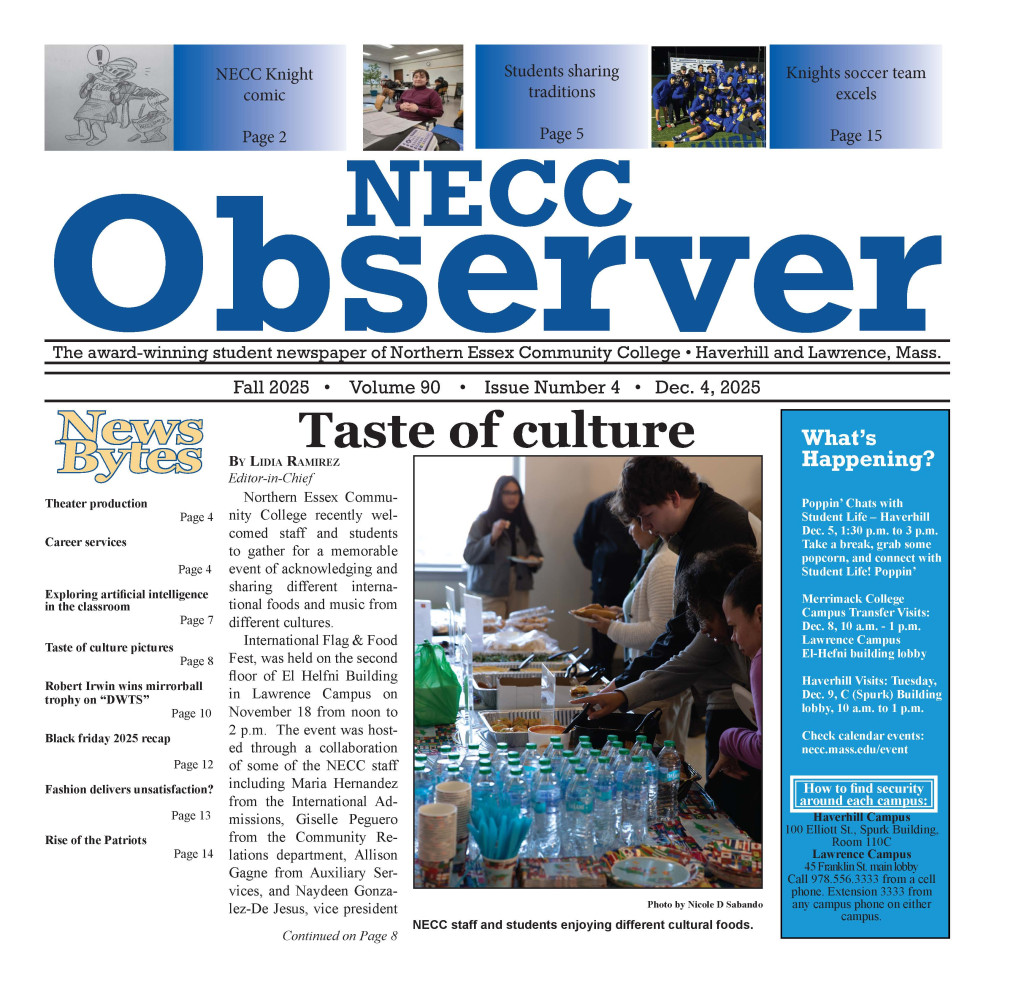Editor’s Note: Noelle Gregoire is a former Early College student at Haverhill High School and NECC and that she wanted to share this op-ed on the current view of the Early College program in Haverhill and the demographic of students participating.
Recently a controversy sparked over who is participating in the Early College program within Haverhill Public Schools. At a school committee meeting Jan. 11, student speakers claimed that there are too many AP (advanced placement) students participating in the Early College program within the Haverhill High and Northern Essex Community College partnership. The presenters stated that the target demographic for Early College in Haverhill is low-income, first-generation Americans, first-generation college students, and students with disabilities. In Haverhill High School, the administration and the students are using rhetoric to describe “high needs students” that deter students from participating in the Early College program.
The advertising of the Early College program has not targeted “high-need” or historically disadvantaged students to participate in the program.
As a former Early College and AP student at Haverhill High School, I wanted to evaluate the demographics of the Early College program in Haverhill and share how beneficial Early College can be for “high-need” or historically disadvantaged students. To solve this problem, students and staff need to be informed of the benefits of Early College and the intended audience needed to participate in the Early College program.
Currently, within the HHS Early College program, there are roughly 260 students participating in Early College which is 13% of students at HHS. The program has grown immensely over the past 10 years of being designated. At Haverhill High School, 70.8% of students are considered “high-needs” which defines students of one or more of the following: low-income, former or current English learner, or a student with a disability. Haverhill High’s overall goal for the program is to have a majority of students participating in the program to be qualified as a “high-need” student. According to DESE reports, only 34.4% of low-income students have completed any advanced placement work. Advanced placement work includes AP classes, dual enrollment, Early College classes, International Baccalaureate, Project Lead the Way, or approved vocational courses. It is assumed that a number of the 34.4% of the low-income students have done a different pathway than Early College as well. It is also important to note that 50.1% of HHS juniors and seniors have taken advanced placement work overall. There are no official statistics on how many “high-need” students have taken advanced placement work. On the other hand, a majority of high-need students at HHS are low-income students. Less than half of both Black and Hispanic students have also taken advanced placement courses. So it is up to question why so few students are participating in Early College when the target is historically disadvantaged students. Historically disadvantaged students, or high-need students in Haverhill, can heavily benefit from the program through school resources, exposure to college-level learning, and college affordability.
The Early College program in Haverhill has miscommunicated how credits can transfer to 2 and 4 year institutions. Most students are told that all or most of their credits will transfer to the school of their choice, which isn’t always the case. A majority of a student’s credits will be transferred if they attend an in-state state school and earn a C or above. With MassTransfer, students can earn an associate’s degree at a community college and have the credits transferred to a state institution. As for private universities, transferring credits can be more difficult. Although some credits can be transferred to private schools is far less likely. The Early College program promotes that the credits can be transferred to most schools but it leaves many confused. Students who know that they will attend a state school are far more likely to benefit from the program in terms of financial benefits. Financial benefits aren’t the only positive of the program. In terms of college preparation, first-generation Americans and college students can be exposed to the workings of the American college system. As someone who grew up with college-educated parents, I was unaware of the lack of accessible resources on the college process families have in my community. I knew what majors are, how to apply to schools, how to file for the FAFSA, what minors are, and more. Most families in Haverhill are not exposed to this process and knowledge. There are many resources for students at NECC and other colleges. At NECC, students can receive free help with computers, counseling services, job and career help, writing workshops, financial aid, transferring, and much more. As a student who has used a few of these resources, I have used skills and information from the writing workshops, financial aid, and transferring credits. Many Haverhill Public Schools staff and students do not recognize who the program and its benefits are and how to correctly deliver information to staff, students, parents, and the wider community. With such a low amount of historically disadvantaged students participating in Early College, the argument should not be ‘Why are there so many AP students taking Early College classes’ but rather, how can we clear up misinformation and ‘How can we get “high need” or historically disadvantaged students to participate in the program that can benefit heavily from it.’

